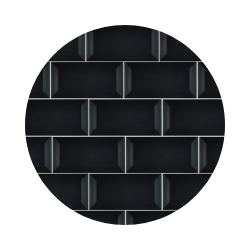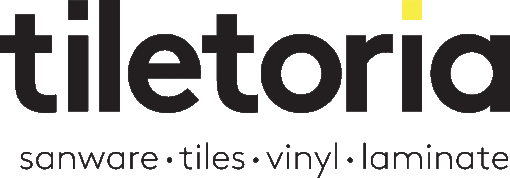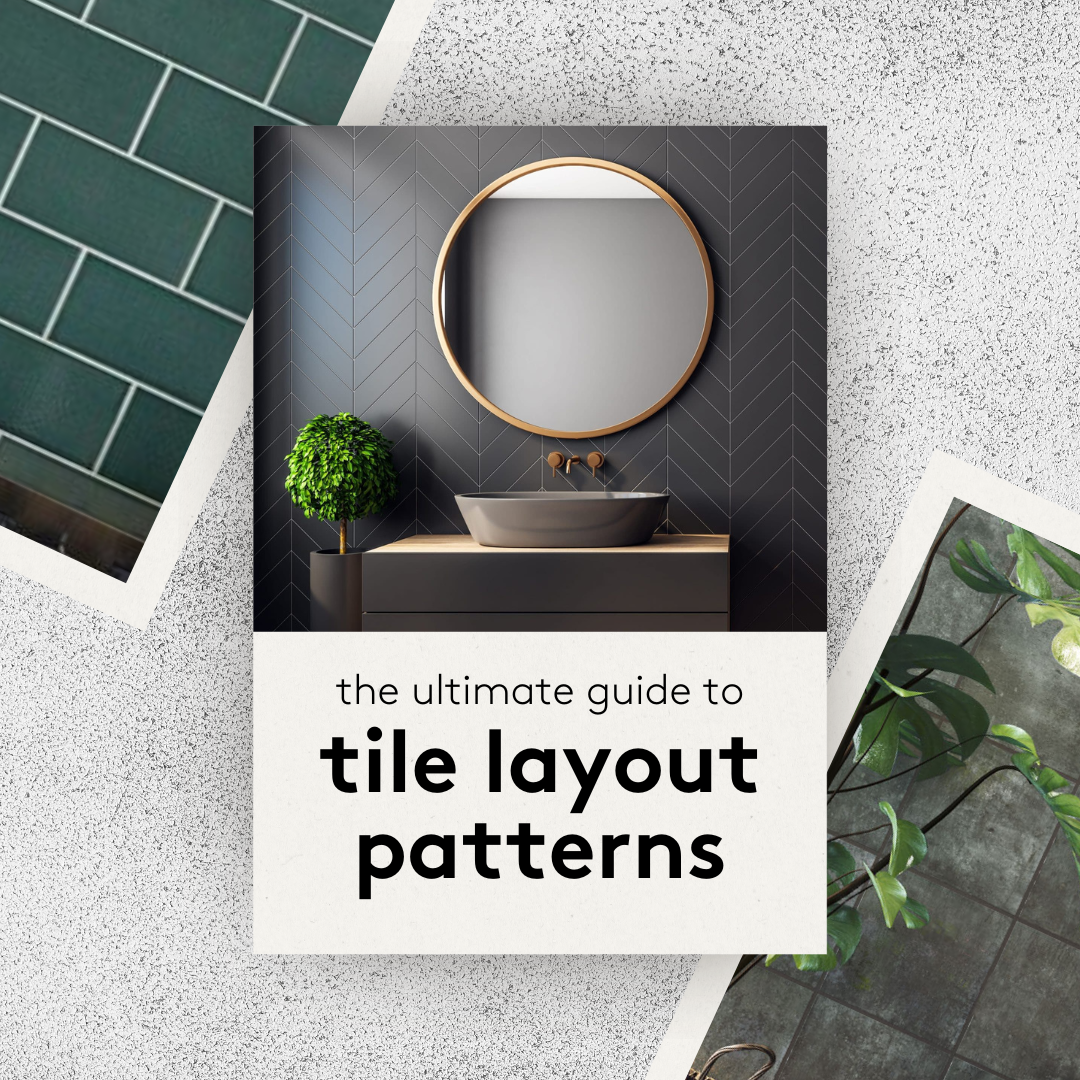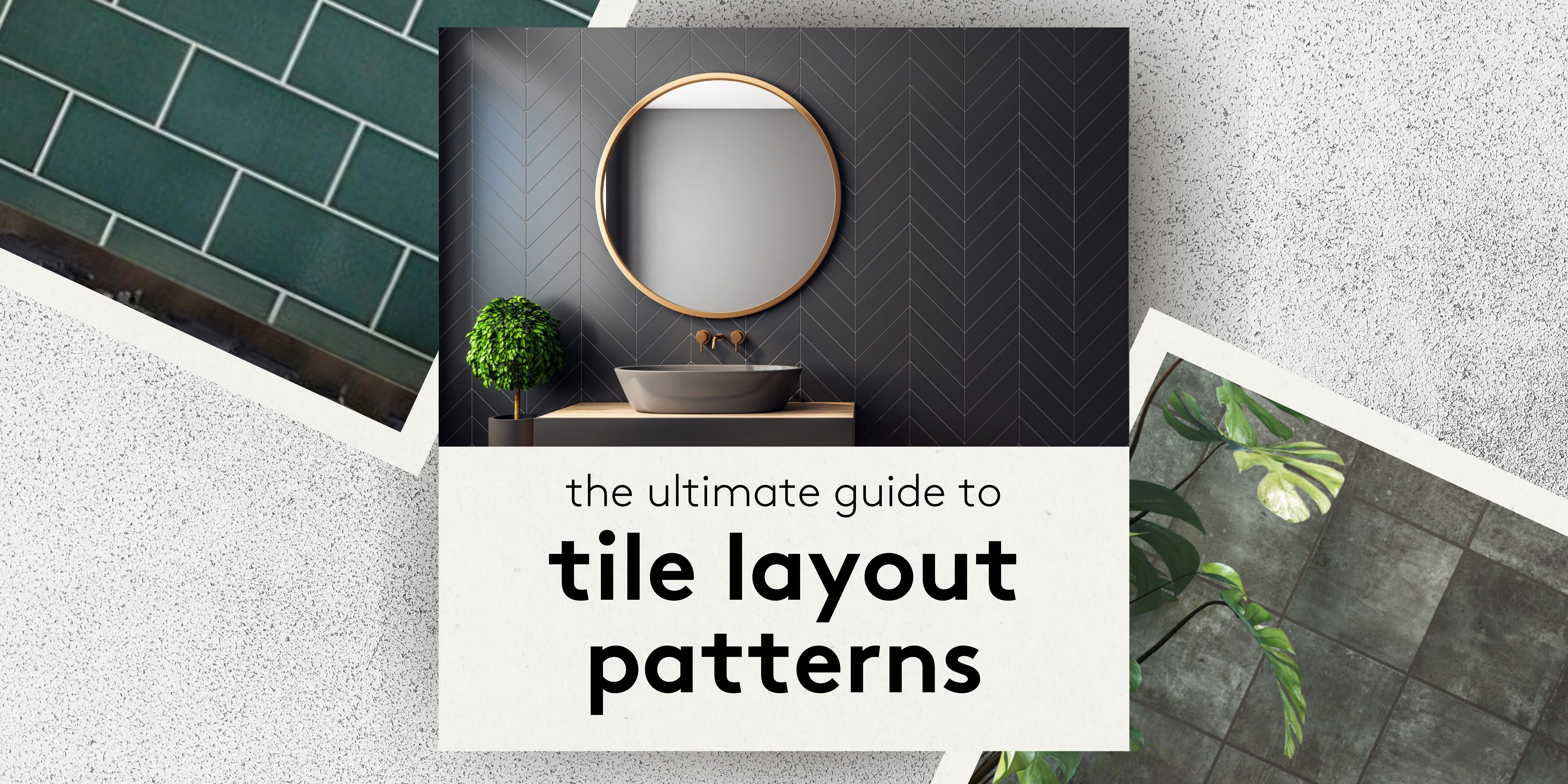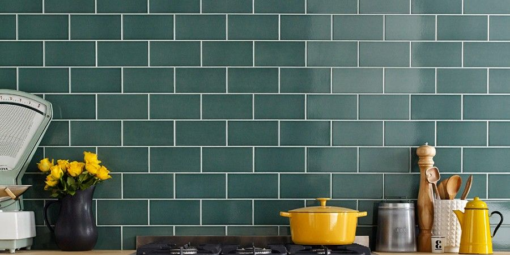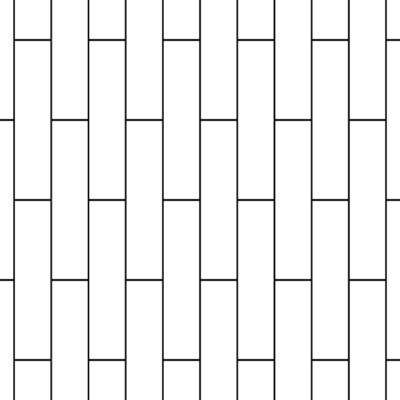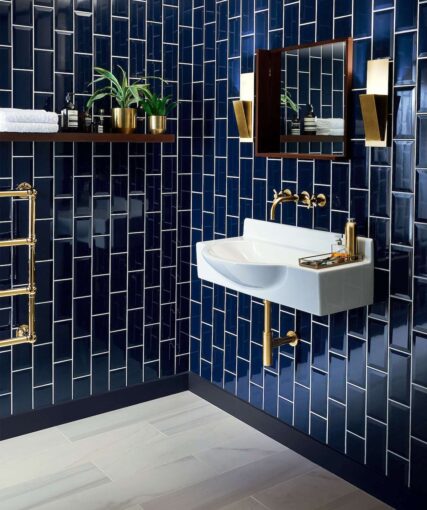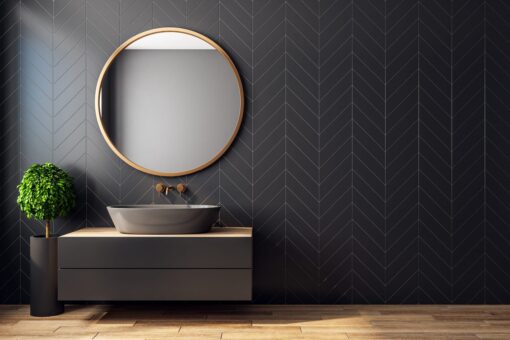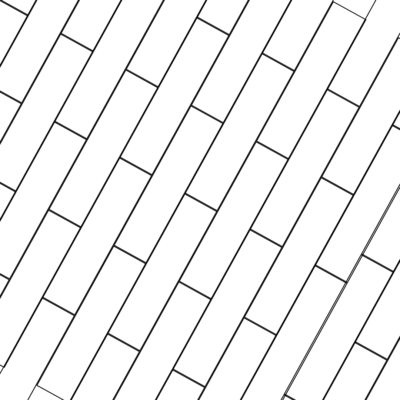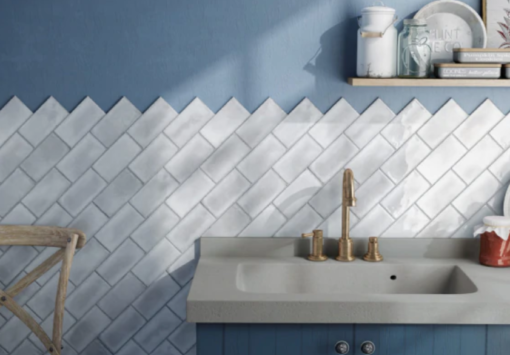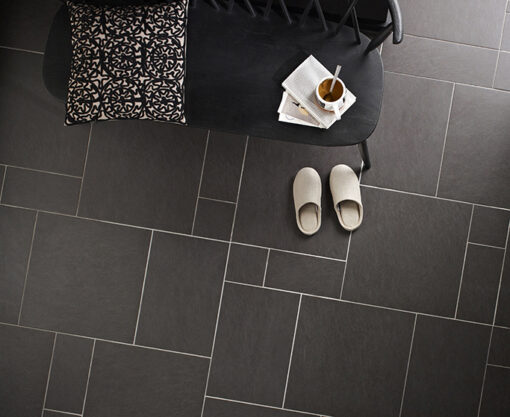One of the most exciting things about tiles is the many different ways that they can be installed. The same tile can create a very different result by simply changing the layout pattern. But with all the options, where do you start? Here are some of the most popular tile layout patterns to inspire your next project.
Table of Content:
1. Running Bond
2. Vertical Running Bond
3. Vertical Offset
4. Stacked Layout
5. Herringbone
6. Chevron
7. Basket Weave
8. Diagonal Layout
9. Modular Patterns
10. Diamond Pattern
1. Running Bond
The running bond, or brick pattern, is a classic. Rectangular tiles are laid at a 50% offset horizontally, giving you a clean, timeless look. This pattern is great for hiding imperfections, making it a go-to choice for many.
2. Vertical Running Bond
The vertical running bond is similar to the running bond but with a twist. Tiles are offset vertically by 50% instead of horizontally. This pattern draws the eye upward, making your small spaces feel taller and more open.
3. Vertical Offset
In the vertical offset pattern, each tile is shifted by a third from the one above it. This creates a dynamic look and also helps make your walls appear taller, perfect for compact areas.
4. Stacked Layout
The stacked layout is simple and modern. Tiles are laid directly on top of each other in a basic grid pattern. This straightforward design gives a clean, contemporary look and is easy to install.
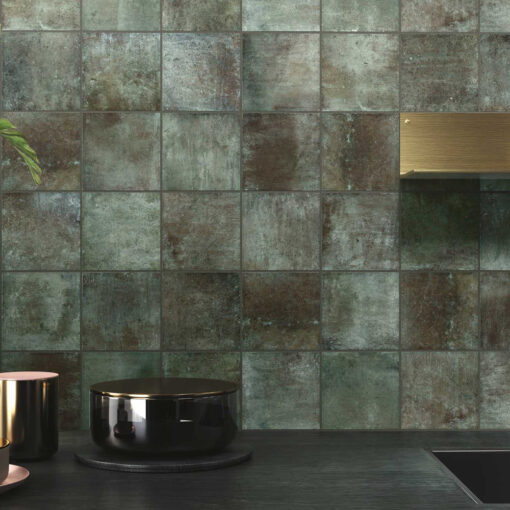
Above: amazonia emerald porcelain
5. Herringbone
The herringbone pattern uses rectangular tiles set at 45 degrees. This classic design looks amazing on both walls and floors. You can use contrasting grout to create a unique look. Herringbone adds a touch of elegance and movement to your space.

Above: Lacche curcuma
6. Chevron
Chevron is like herringbone but with tiles meeting at a 45-degree miter joint. It can be tricky and time consuming to install, but the end result is so worth it. If your tiles aren’t pre-cut for a chevron layout, you’ll need to cut the ends at a 45 degree angle to fit.
7. Basket Weave
The basket weave pattern alternates horizontal and vertical tiles to create a woven look. Tiles are laid horizontally to form a square and then laid vertically to form another square. The horizontal and vertical tiles then alternate of the following rows. It’s a great way to add texture and visual interest to any space.
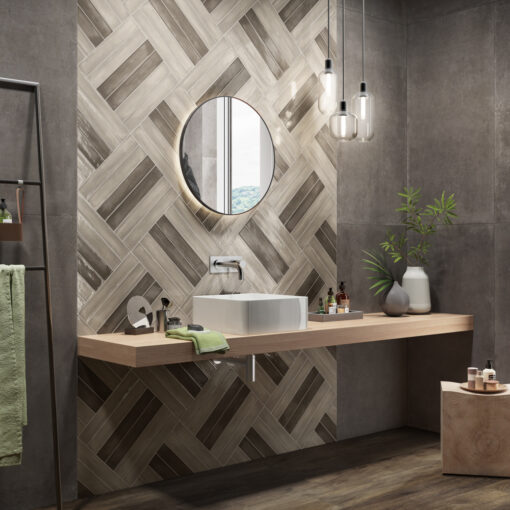
Above: lacche bruno ceramic
8. Diagonal Layout
A diagonal layout is similar to a running bond, except tiles are turned 45 degrees for a diagonal layout. This pattern is perfect for hiding imperfections and adding a creative touch to your floors or walls.
9. Modular Patterns
Modular patterns are formed by mixing square and rectangular tiles for a modular pattern. The possibilities are endless, and you can create a custom look based on the tile sizes and shapes you choose.
10. Diamond Pattern
Lay square tiles in a diamond pattern for a touch of timeless elegance. This layout is widely used and works well on both walls and floors. A diamond pattern can help disguise uneven surfaces and will hide imperfections if your wall or floor isn’t perfectly square.
Prefer to watch?
Ryan and Deon discuss tile layout patterns
For more inspiration, visit a Tiletoria showroom. Explore these patterns and find the perfect layout for your next project!

